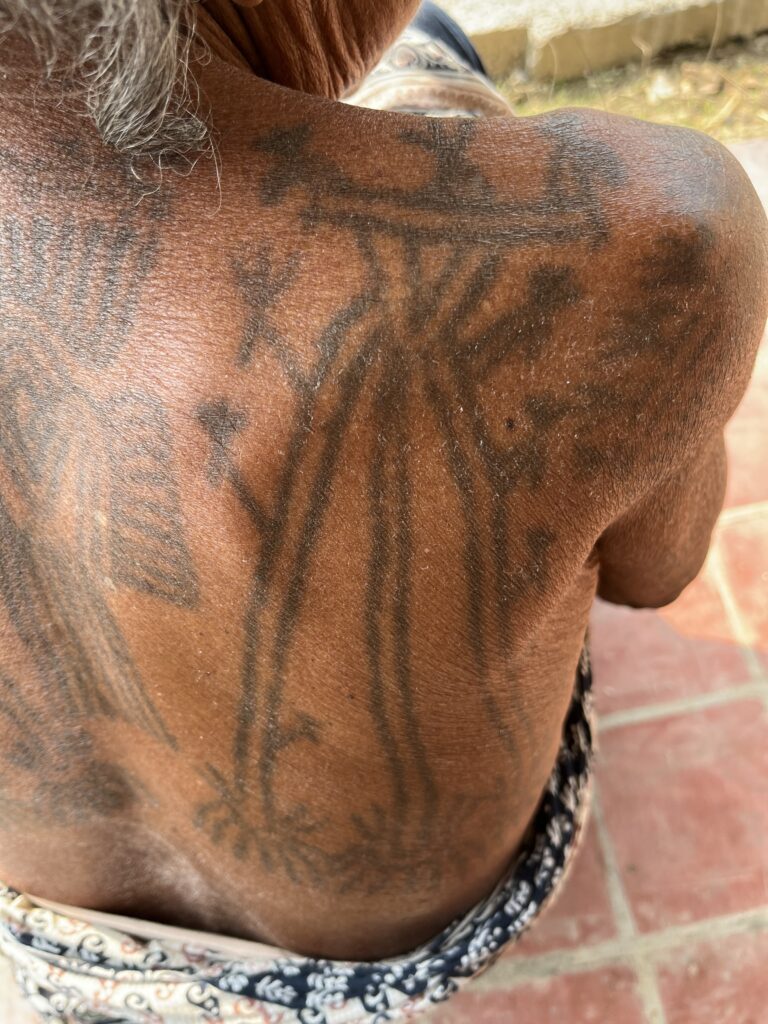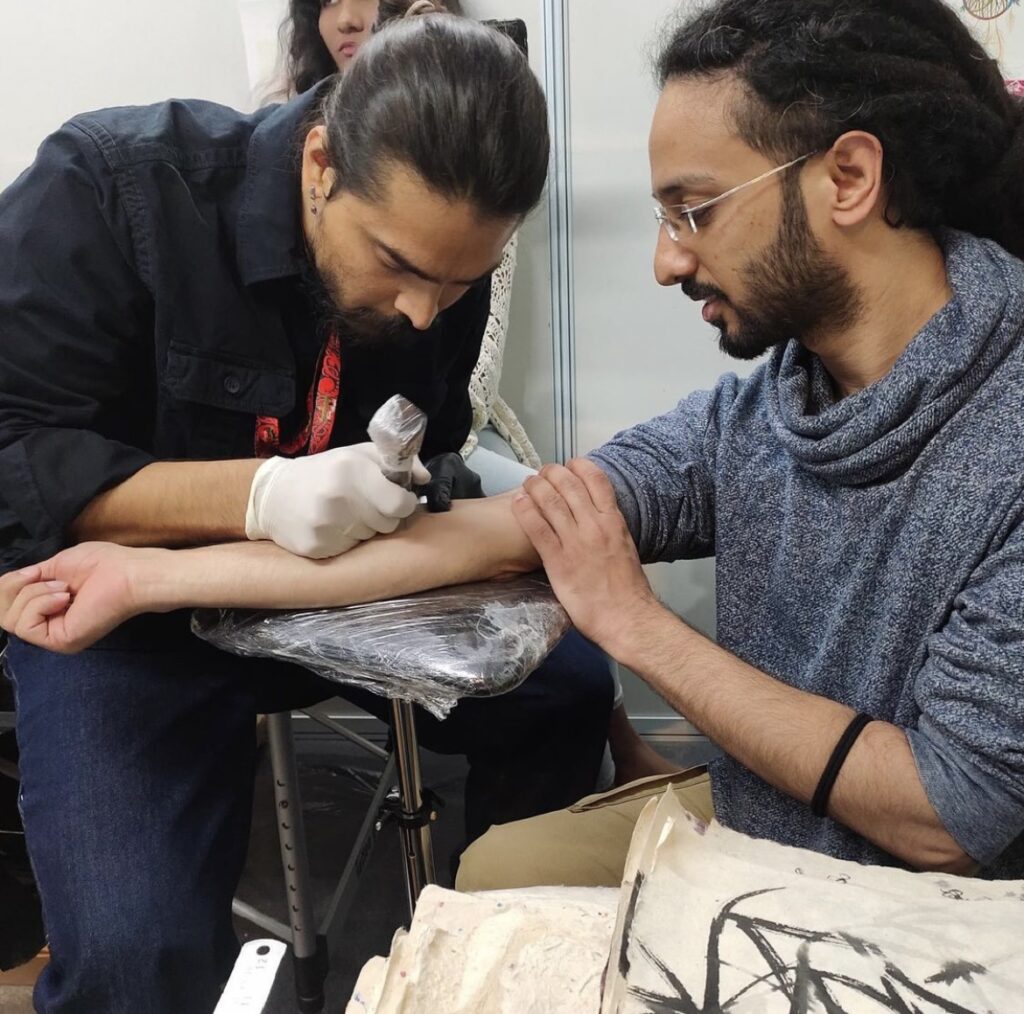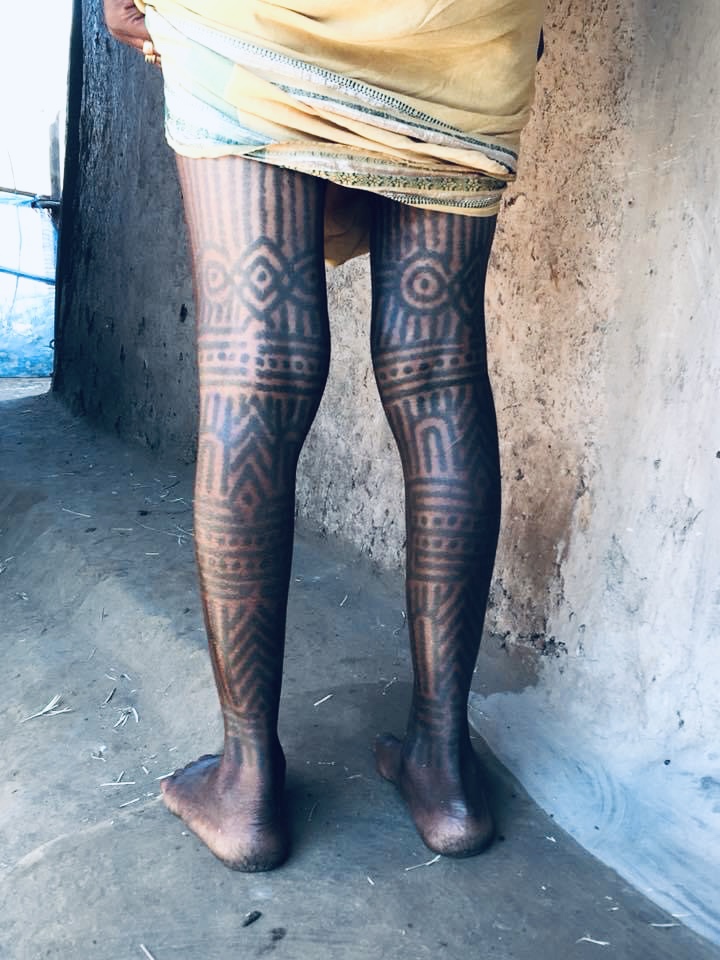
Machines provide the cut, clarity, and precision you want. Machines produce robotic results for you. But can technology bring you closer to yourself or give you a sensory bond? If you assert that machines do, I will disagree. The thing that draws you nearer to your tattoo is not a machine. That design is unique because of the emotion, thought, and intelligence that went into it. When it is manually pricked and makes you feel a sense of belonging to your tattoo, it becomes even more precious. If your body is an empty canvas, a tattoo on it would serve as your personal brand.
Why, with all the technological advances, do people choose more manual poke tattoo setups?

Because a part of your mind wants to take ownership of the tattooing process and this is a method to stay more connected to the roots. Call it a gesture to the past, a resurgence of an old school of thought that still exists in our minds, but when we choose hand poke tattoos, we feel connected.
It feels like your own emotions are being inscribed, and the process serves as a reminder of why you want something so much. You have creative authority and independence using Handpoke.
When I began to consider other options in the tattoo industry, I made a U-turn toward hand poke as an inquisitive artist and curious person. I revisited the past and discovered some astounding information regarding the hand poke tattoo system. India has a long history of tattooing, particularly among tribal tribes. Tattooing is referred to as “Godna” in Northern and Central India.

The Baiga tribe of Madhya Pradesh practises the popular art form known as godna, which is an essential element of their way of life. Since there are several myths and folktales about the origin of these tattoos, Baiga women have large tattoos on their bodies. Tribal men also wear Godna because they think it’s the only adornment, they can take with them into the afterlife.

In their village, girls start getting tattoos as early as age eight, starting with simple line designs on the forehead, and as they become older, more are added. “This is regarded as a type of adornment for girls. Even gold and silver do not have the same worth as Godna, according to tattoo artist Shanti Bai from the baiga group.
Other tribal societies, including the Gond, Baiga, Bharia, and Sahariya, also practise this kind of art. Godna contains a variety of motifs, each with a distinct meaning. Some of these motifs are applied in accordance with rites of passage in a woman’s life, such as puberty, marriage, and childbirth, while others are applied more generally.
However, Godna has more than simply ornamental purposes in mind; the art form is also thought to have some medicinal qualities. A ‘V’-shaped mark in the middle of their forehead, between the eyebrows, is the distinctive tattoo of the Baiga women.
The tribals appeared to be the main for some classic and well-liked tattoo designs. They feature tribal mythology, horses, elephants with riders, scorpions, peacocks, and floral and geometric patterns. Girls typically get floral tattoos, but little girls prefer single dots on their faces or half-circles that resemble a horseshoe over their forehead. Older women enjoy getting tattoos on their legs, hands, and shoulders that feature scorpions, deer, peacocks, and floral motifs.

The tattoos are highly prized for their therapeutic properties and their symbolic meaning in rituals. The indigenous people think that tattooing Godna on their bodies keeps them in shape. “Wounds are healed because of the medicinal herbs utilised in the Ink of Godna.” It is administered to the places where cuts are present, and occasionally it is even used to treat colds and aches.

‘’Mai apne ap ko kafi soubhagya Shali manta hun ki Mujhe shanti bai ji se handpoke sikhne ka avsar mila Mai hamesha se hi indian tribal art ko sikhana or uske bare me janana chahata tha jiski suruat baiga tribal godana se hui shanti bai ji se godana sikhane ke bad Mujhe ye samjh aya ki jo tarika or process wo apne Goan me use karti hain Mai wo city’s me apply nahi kar paunga to maine Morden needle (jo normally sabhi handpoke tattoo artist use karte hai city’s me ) uske liye ek wooden tool design kiya or use carve karke thode adjustment kiye so than needle ko kam ya jyada bahar ki taraf nikala jaye maine apne wooden tool ko name Diya godanayantra (tool for handpoke )jo ki kafi practical bhi sabit hua Kafi foreigner artists ne bhi mere godanayantra use kiye or bataya ki kafi freedom mila handpoke karne me unhe ,so Mai apne godanayantra ke liye kafi majboot as well as light weight wood hi use karta hun jaise teake wood shisham wood , bamboo ,Asam teak wood ,rose wood etc in sabhi wood me carving quality hoti hain . Mai unke uper indian tribal motif carved karta hun isse mere wooden tool ko ek artist touch and some tribal culture mil jata hai ,end me Mai uspar ek glossy coat karta hun jisse wo hygiene protected hojata hai jitane bar aap usse handpok karte hai utane bar ap use alcohol base se clean kar sakte hain ,mere godanayantra invent karne ke piche ka sabse bada karan ye hai ki mai chahata hun ki artist ko ek achcha grip Mile jisse ki wo apne work pe focus kar paye or is liye kiunki Mujhe lagata hai tools ek artist ki pehchan banane me utana hi ahemiyat rakhata hai jitana uski mehanat use artist banane me ,godanayantra ka sath me hona apko professional banata hai.’’
Amit Arjel , bluebloodtreetattoo
It takes up a lot of courage, hard work and dedication to go back or revisit to roots and revive the glory.
But witnessing the hard work tribe people are putting and the magnitude of love they have for their art is something that keeps you going .
Do share your story with me,
what connects you with your art, design and inspiration while designing the tattoo.
until we meet next
II Stand tall but stay grounded
Stay strong but be humble
Have a strong exterior but a soft soul
Be like a tree and let dead leaves drop II
Amit Arjel
Bluebloodtreetattoo



1 thought on “Godana yantra”